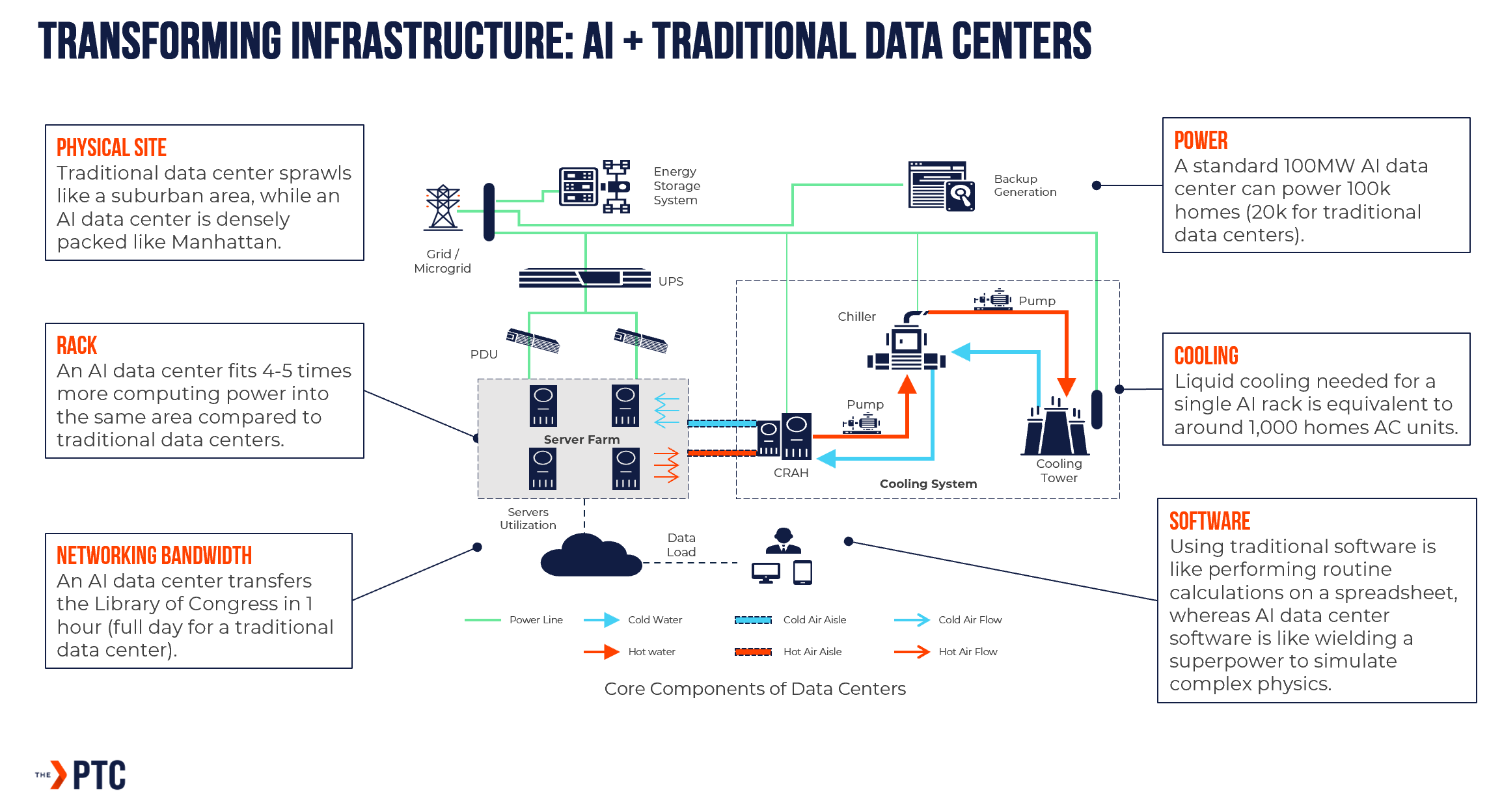The PTC
2
min read
Published on
August 21, 2025
August 21, 2025

Sustainability is no longer a secondary consideration in digital infrastructure. It is now a central concern for developers, operators, investors, and regulators alike.
As data centers grow in scale and complexity, so too do the environmental and regulatory expectations placed on them. At the intersection of energy, real estate, and digital demand lies one of the most urgent challenges of this decade: making data infrastructure sustainable, accountable, and future-proof.
Among the most pressing concerns is cooling. In many facilities, cooling systems consume up to 40% of total energy usage, particularly in regions with higher ambient temperatures or dense rack deployments. As AI workloads increase power draw and heat output, the limitations of traditional air-based cooling are becoming more evident. Operators are now shifting to high-efficiency systems such as rear-door heat exchangers, direct-to-chip liquid cooling, and immersion technologies.

Energy efficiency is only part of the equation. Data centers are also facing increasing scrutiny over carbon emissions and water usage. Markets like Singapore, Ireland, and the Netherlands have introduced moratoriums or caps on new builds unless facilities can demonstrate clear environmental performance. International frameworks such as the EU Taxonomy, TCFD (Task Force on Climate-related Financial Disclosures), and SFDR (Sustainable Finance Disclosure Regulation) are pushing ESG reporting from optional to expected.
Real estate developers and infrastructure owners must now integrate ESG into site selection and asset design from the outset. This includes considering renewable energy availability, on-site generation, biodiversity protection, stormwater management, and circular materials. Waterless or recycled water cooling systems are gaining traction, especially in drought-prone areas.

These pressures are also changing how capital is deployed. Institutional investors and green infrastructure funds are raising the bar for ESG alignment in new and existing projects. Tenants, particularly hyperscalers, are actively tracking the emissions intensity of their colocation partners and requiring measurable sustainability outcomes.
The future of digital infrastructure will not be shaped by performance alone, but by accountability, adaptability, and alignment with global climate goals. Real estate leaders who embrace these ESG imperatives will not only avoid risk, but unlock new forms of long-term value.
.jpeg)
.jpg)





.jpg)
.jpg)
.webp)
.jpg)
.jpeg)


.png)
.png)

.jpg)

.jpeg)
.jpeg)

.jpeg)
.jpg)
.jpg)
.png)

.jpg)
.jpeg)
.jpeg)
.jpeg)
.jpeg)

.jpeg)





.jpeg)

.jpg)
.jpeg)
.jpg)

.png)
.jpeg)



.jpg)


.jpeg)
.png)


.jpg)
.png)

.png)
.png)
.jpg)
.jpg)
.jpg)
.png)
.webp)
.png)
.jpg)
.jpg)
.jpg)
.jpg)
.jpg)
.png)
.png)
.jpeg)
.jpeg)
.jpeg)
.jpg)
.jpg)
.jpeg)
.jpeg)
.png)
.jpeg)
.jpg)

.jpeg)

.jpeg)